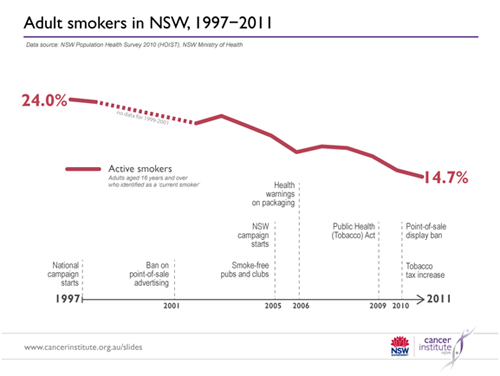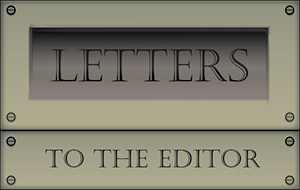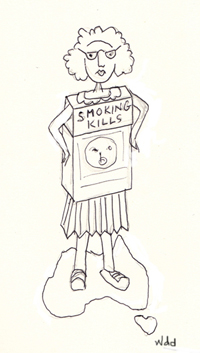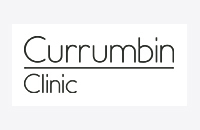Ireland v. Murdoch on plain-pack cigs
In one of the most irresponsible pieces of journalism seen for some time, The Australian (no less) of 6 June 2014 reported on its front page (no less) on ‘evidence’ showing that the former Labor government’s ‘nanny state’ support for plain cigarette packs had failed miserably.
Citing an industry monitor called InfoView, the Australasian Association of Convenience Stores and that most reliable source, cigarette manufacturer Philip Morris, the paper reported that the ‘world’s toughest anti-smoking laws’, introduced in late 2011, are not working.
To reinforce the point, the story was accompanied by a large photo of two attractive young women sitting in a Brisbane park during their lunchtime, happily puffing away. One was quoted as saying that plain packaging does not work because if someone is addicted to smoking they would rather spend their last money on smokes, not food.
Not a single health expert, or even an ex-smoker, was quoted, while on the page 4 spill of the story, another large photo showed a convenience store employee in front of a large rack of cigarette packs.
He supported the comments of the British American Tobacco spokesman in the preceding paragraphs who said sales had increased and quit numbers dropped.
The only people who might have defended the ‘nanny state’ legislation, former Labor health ministers Nicola Roxon and Tanya Plibersek, chose not to comment on the industry claims.
Why bother? You’re on a hiding to nothing when you set sail against the pre-existing winds of Rupert Murdoch’s national broadsheet, now celebrating its 50th year of life.
But there was more… the paper also ran an editorial, ‘Suck it up nanny, plain cigarette packs have not cut smoking’, in which the paper argued…wait for it… that, ‘Plain packaging deprives tobacco firms of valuable assets – the intellectual property of their marketing.’
Surely it would be more logical to say smoking deprived them of even more important assets, their customers, because they die from consuming the product, not to mention costing society massive amounts of money in health care.
When friends ask why I still take The Australian, which once provided a substantial part of my income, I reply, not entirely in jest, that in the Northern Rivers one could easily become complacent about life. The Australian is guaranteed to make me angry every morning.
In this case, what especially infuriates me is that the agenda-driven coverage of the smoking issue is inaccurate, or at best (to give some credit to the little known body InfoView), misleading.
I am not alone. ABC MediaWatch has also slammed the story for its inaccuracy and bias.
Smoking rates in Australia have been on a steady decline for decades, the reason, according to bodies such as the Cancer Council, being “sustained government [yes, Mr Murdoch, government] tobacco control strategies (e.g. high tobacco taxes, advertising bans, mass media public education campaigns and smoke-free environments legislation).”
Perhaps plain packaging is also a factor. Ireland thinks it might be, as that country – an early banner of smoking in pubs, a move that actually brought people back – is proposing legislation to remove logos, colours, graphics etc from packs, and make health warnings more prominent.
Not surprisingly, the Irish health department expects the move to be “fiercely contested in the courts by tobacco firms”.
And no doubt opposed by those arms of Murdoch’s News International that reach across the Irish Sea from the UK and north America.
Similar legislation is making its way through the New Zealand parliament, guided by a government less loathed by the Murdochian stable, but surely being lined up for a full frontal assault.
Back in the real world, where the truth actually matters and reading a newspaper should not leave the aftertaste of licking an ashtray, here’s what the Cancer Council has to say about Australia’s gradual shift to a society where healthy quitters might be the page 1 role models -

The Commonwealth has reported the smoking figures.
Recent data released in Tasmania, long considered one of the nation’s highest smoking (and most socio-economically challenged) jurisdictions, has also been welcomed as good news.
Director of Public Health Dr Roscoe Taylor said the Tasmanian Population Health Survey showed well under 1-in-5 Tasmanians now smoked and the trend was towards even fewer smokers in the future.
"This is a tremendous result and means many thousands of Tasmanians will live longer and more productively, and the financial burden on the health system will be dramatically less," Dr Taylor said.
The Tasmanian Population Health Survey 2013 showed the number of Tasmanian adults smoking had fallen from 19.8 per cent to 15 per cent since the last survey in 2009.
While the true percentage of current smokers “is probably a little higher than the 15 per cent shown by this latest Tasmanian survey, the survey certainly points to a very pleasing decline in smoking rates compared with four years ago."
Daily smoking rates fell from 16.1 per cent to 11.9 per cent across the same period.
Postscript
Ever ready to mount an attack, or in this case, counter-attack, against Fairfax Media or, in this case, the ABC, The Australian has reacted vigorously to MediaWatch’s criticism of the paper’s plain cigarette packaging story of the previous week (‘Plain wrong? Here are the facts: cheap smokes are on the rise since plain packaging’, 18 June 2014).
Again, the topic dominated the front-page, and again the coverage featured a photo of an attractive female smoker (‘Brisbane’s Marianna Tigani said she was a “proud smoker”’), and comments from tobacco industry spokespeople.
While echoing its earlier claims that, despite plain packaging, smoking rates in Australia had tended to rise – an assertion contested by health sector analysts - the central focus of the follow-up was that many smokers are moving towards cheaper brands, and this was “pushing up sales and frustrating health policies.”
Oddly - or not, depending on how one views its motivation - the paper did not link the rising popularity of cheap brands with the state of the economy, especially relevant as smokers tend to be in lower socio-economic brackets and thus are price sensitive shoppers.
Moreover, the consumers of lower price brands are likely to be heavier smokers, around 14-17 per day, compared to 9-12 for those buying premium brands. Instead, the paper claimed that, “Anti-smoking measures are driving a boom in cheap cigarettes.”
This was explained by British American Tobacco Australia’s director of corporate and regulatory affairs: “While we understand the government is trying to reduce smoking rates by raising excise, combined with plain packaging, it’s actually increased the number of smokers buying cheaper legal cigarettes as well as black market tobacco.”
He went on to say that people were “generally buying more cigarettes and paying less for them,” which had prompted BAT to launch its $13 Rothmans packs, the cheapest on the legal market.
Well, they’d have no choice, would they?
And so it went on, spilling to a page 4 filled with stories under such headings as, ‘What Media Watch package didn’t tell us’ [nice pun, sub-editor], ‘Plain wrong? Here are the facts’, ‘Labor policies in the frame: it was a case of smoke and mirrors’, and ‘Cherry-picking stats an uncertain science’. The last, an ‘Analysis’ warning of a “naive reliance on ABS statistics”, included the lame addendum, “This isn’t a criticism of the ABS per se”.
There was no doubt, however, about the coverage’s criticism of anyone, whether government, media organisation or concerned individual, who might wish to curtail the community’s uptake of harmful products.
In the laissez faire, free enterprise world of The Australian, it is all a matter of choice and personal responsibility. The fact that the number of young people buying low priced cigarettes had doubled in the past year - presuming that the BAT representative can be believed – is apparently not a matter of concern but one of market reality.
















